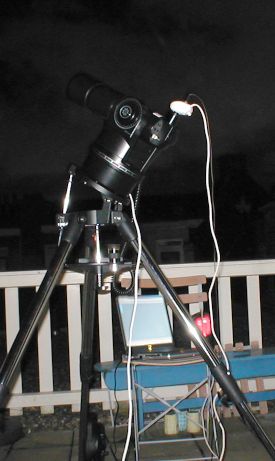M42
Finally, some time and sky to work on long exposure webcam-astronomy...
The remaining clouds allowed an open view on Orion. M42, certainly one
of the more prominent objects, easy to see and easy to record, gives a
perfect light source for experimenting as it includes a very bright
open cluster as well as a dark cloud and a bright nebula.
Instrument
|
ETX-70 equatorial mode, #494
autostar |
Camera
|
ToUCam pro PCVC-740, Baader IR
filter
|
| Data acquisition |
K3CCDTools, 10s exposures
|
Data registration
|
RegiStax 2, K3CCDTools |
Frame stacking
|
RegiStax 2, K3CCDTools
|
Postprocessing
|
RegiStax 2 & IrfanView,
iMerge
|
Some resulting images (based on the same recorded AVI file - have a
look at a compressed WMV version) were
obtained using different sets of postprocessing parameters (contrast,
brightness, saturation, gamma curve, etc.) in order to respect the
different aspects of the complex object. All image tuning steps were
carried out on all pixels equally (no area selective tinkering).
The Results

Image resulting from registration and stacking, no
postprocessing
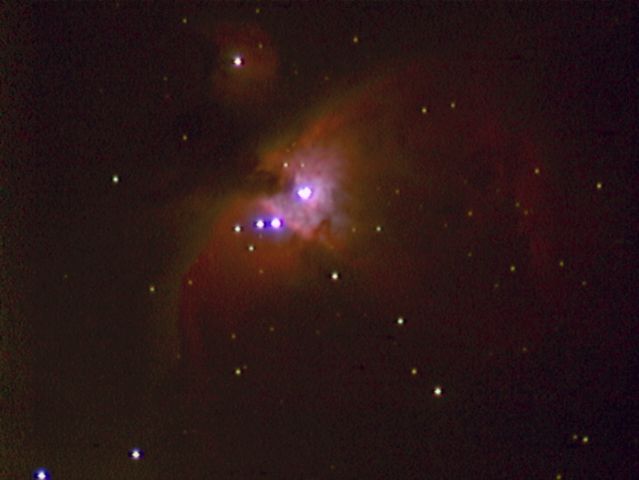
The above "raw" image postprocessed using IrfanView
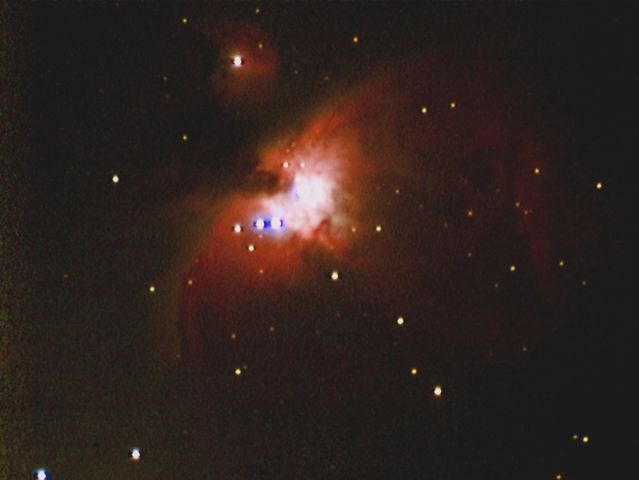
Light postprocessing using RegiStax

Massive fiddeling with RegiStax and IrfanView
postprocessing
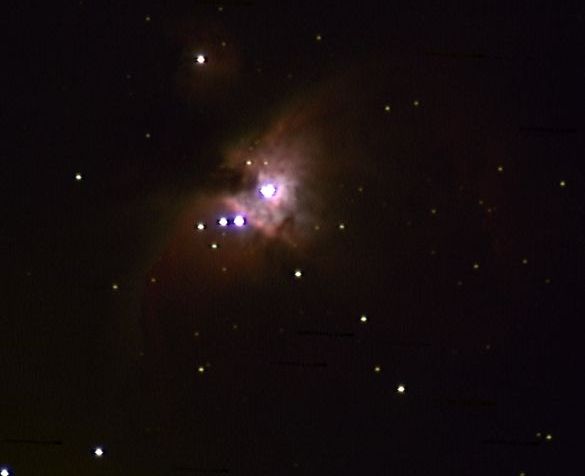
Registration using K3CCDtools linear scale
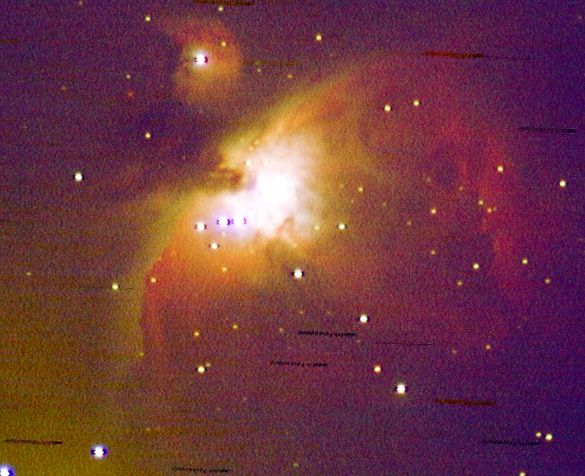
Registration using K3CCDtools logarithmic scale
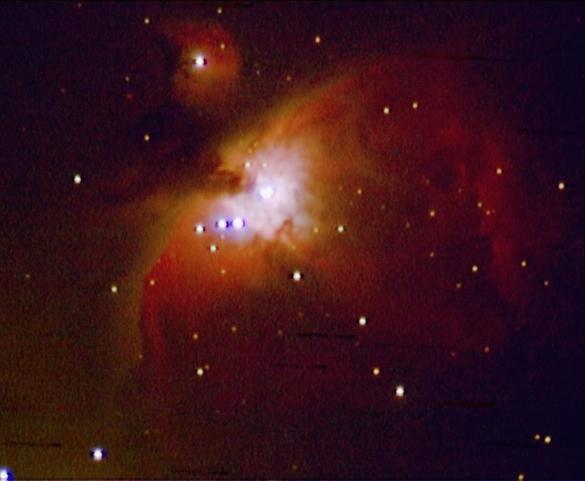
All above combined using iMerge
The Observatory
Have a look at my hyper-professional setup to catch the hole in the
clouds (greyish stuff above the roofs in the background). Even though
the mechanical setup looks pretty solid, the RA motor of the fork
produces some jitter occasionally. Consequently I performed a manual
selection of the frames to be registered, resulting in a loss of about
30% of the 10sec frames.
Last modified, Sept. 27th. 2004








